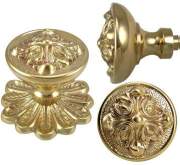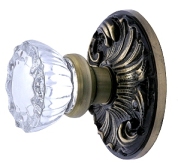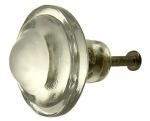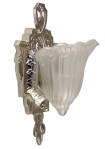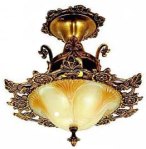Posts Tagged ‘french’
Origins of the Fleur de Lis design – Door Knockers
The Fleur de Lis design has been immensely popular throughout European history, but is almost always associated with the French monarchy, although it has never been officially recognized by the French government. It is still predominantly used on coats of arms throughout the region, more specifically with the King of Spain and the house of Bourbon, as well as many French-speaking Canadian provinces.
The name Fleur de Lis translates into ‘lily flower’ although it is actually more similar to an iris than a lily. It is said to have actually been named for the flowers of the river lis, which were irises. Since saying that is quite a mouthful, the name was shortened. While there are some documents that support this theory, few remain intact as this was before the 12th century, B.C.
The ties between the symbol and the French monarchy can be traced back to the twelfth century, when kings Louis VI and Louis VII started using the design as propaganda on scepters trying to help portray themselves as saints. Further uses of this design in France were on their nation’s flag, a banner that has changed several times over the centuries to include or remove it.
In modern times, this symbol is often used as a decorative element on everything from the tops of fences, the arms of crosses and in many scouting troop uniforms, such as the Boy Scouts of America. It is also very prevalent as elegant touches on homes in the forms of door knockers, or embellishments on door handles or other pieces of cabinetry hardware. The fleur-de-lis is the main element in the logo of most Scouting organizations, representing a major theme in Scouting: the outdoors and wilderness. The World Scout Emblem of the World Organization of the Scout Movement, has elements of which are used by most national Scout organizations. The symbol was chosen by Sir Robert Baden-Powell as it had been the arm-badge of those soldiers qualified as “Scouts” (reconnaissance specialists) when he served in the British Army. The classical description of this shape in Scouting literature connects the compass rose with the purpose of Scouting’s principles—namely that Scouting gives one’s life direction. The stars stand for truth and knowledge, the encircling rope for unity and its reef knot service.
These door knockers come in your choice of six different finishes (antique copper is pictured to the right) so that you may best accent your front door. Included with each one is a striking block as well as a pair of mounting screws in a matching finish.
Richardsonian Romanesque Architecture and Interior Design Elements
Richardsonian Romanesque is a style of architecture that was named after Boston architect Henry Hobson Richardson Richardson became famous in the late 1800’s. One of his most famous and popular works is the Trinity Church in Boston, which is now listed as a historical landmark, protecting it for generations to enjoy in the future. Most of his pieces originated on the East coast, and Boston would become host to several of these buildings. This architectural style combines aspects of French, Spanish, and Italian architecture, especially that from the 11th and 12th century.
Richardson’s style became so popular and unique in the United States that it influenced several architects as far away as Finland. In fact, its popularity in the United States inspired many people who would go on to become great architects. Perhaps one of the most famous of these people inspired by him is Frank Lloyd Wright. Other famous Richardson buildings include the American Museum of Natural History’s original 77th Street structure, First Presbyterian Church in Detroit, MI on Woodward Avenue, and the Buffalo State Asylum for the Insane in New York State.
This style is generally considered too elaborate for many homes, but was an extremely popular choice for churches, museums, and other government buildings. In fact, one of the other most famous buildings in the Richardsonian style is the Buffalo State Asylum for the Insane in upstate New York.
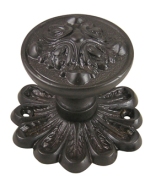 Common characteristics of Richardson Romanesque include; heavy, rusticated stone materials, semi-circular arches, deeply recessed windows, towers with cone shaped roofs (very castle-like), and low broad arches over arcades and doorways. Most Romanesque buildings are masonry, although there are a fair few wood and shingle Romanesque style buildings.
Common characteristics of Richardson Romanesque include; heavy, rusticated stone materials, semi-circular arches, deeply recessed windows, towers with cone shaped roofs (very castle-like), and low broad arches over arcades and doorways. Most Romanesque buildings are masonry, although there are a fair few wood and shingle Romanesque style buildings.
Richardsonian architecture doesn’t really follow any particular style, and tends to borrow elements from several different ones instead. No two buildings are alike, and although they may share similar elements are more like buildings built in two completely different styles. Richardson’s style can be seen all over the United States, especially in major cities. His buildings were commissioned by many local and state governments to make a statement as well as provide an eye-catching and functional building for many to enjoy over decades, even centuries.
Second Empire Architecture
The Second Empire architectural style was named after the French-inspired elements that appeared during the Second French Empire. The style was at the height of its popularity between 1865 and 1880, and while it was most popular in the United States, a variation can be seen in parts of France where it is called the Napoleon III Style. The Second Empire style has many elements specific to this time period, but, just like with any other style, some of the elements were influenced by other architectural time periods, like the Gothic Revival and Italianate styles.
In the United States, the style tends to be portrayed through rectangular towers with a steep mansard roof, which is the most typical of the French style from which it was derived. Most often, these roof crests have an iron trim, and sometimes they also have decorative lightening rods attached. The façade of the home is generally composed of wood, brick, or stone, and may also have paired columns. Most of the floor plans for Second Empire houses fit one of two styles: symmetrical with the tower in the middle or asymmetrical with the tower off to one side. Just like many things French, the more elaborately decorated and expensive-looking the better!
While there are a multitude of homes that were constructed in this style during the height of popularity, and most are still standing, the majority of the more well-known buildings are commercial properties, or government ones. In fact, so many government buildings were constructed during President Grant’s time in office that they were actually said to be created in the “General Grant Style”, rather than the Second Empire. The reason that so many large buildings were constructed in the Second Empire style is due to the versatility of their size.
More Neo-Renaissance
There is one main design element that was very popular in the original Renaissance style as well as the Neo-Renaissance style is the great staircase. These were made popular by the French monarchy starting back in the 1500’s. Though slated as one of the classic examples of the French Renaissance, they were highly influenced by Italian architecture and the earlier Gothic style. While Gothic style and Neo-Renaissance don’t share characteristics, the French Renaissance was born out of the addition of Neo-Renaissance decoration to Gothic style buildings. Most architects of the Renaissance avoided drawing inspiration from the Gothic style, but insted focused more on classically styled buildings.
These staircases were extremely elaborate, often rising several stories. They were often made of carve stone, were spiral in fashion, and seated on the exterior of the building in an open, yet covered circular room to encompass it. They usually overlooked the courtyard area of the building, allowing the person utilizing it to enjoy the fresh air while still being sheltered, to an extent, from the elements. One of the main improvements that neo-Renaissance brought to this architectural staple was adding glass. This allowed the structure to remain in the true style to which it was intended.
The Neo-Renaissance period had two other major architectural styles that had great influence on it. The Gothic style has absolutely no similarity to the Renaissance style, but they appear simultaneously throughout this period. The Baroque style is viewed the same way When some of the older Gothic and Baroque buildings were remodeled, they were often adorned with the more ornamental Renaissance style.
The interiors of the Neo-Renaissance buildings didn’t have a specific style they adhered to. Instead, the design was at the mercy of whomever it was designed for. Their influence, potentially with a little from the architect itself, created style all its own. The purpose of the building was also taken into account, and decorated to reflect that. One of the most important elements that was taken into consideration was comfort
Empire Style of Architecture
The Empire style of architecture is often added on to the end of the Neoclassicism period with a lot of people. This style took place in the late 19th century and unlike many other styles that focused on the exterior elements of a building, the Empire style was more about furniture, decorative, and visual arts. The architecture itself still had a part in what makes the style so unique, but on a much smaller scale than with some of the other Neoclassical styles. In the United States, the Second Empire style usually combined a rectangular tower, or similar element, with a steep, but short, mansard roof; the roof being the most noteworthy link to the style’s French roots. Prior to the construction of The Pentagon during the 1940s, the Second Empire-style Ohio State Asylum for the Insane in Columbus, Ohio was reported to be the largest building under one roof in the U.S., though the title may actually belong to Greystone Park Psychiatric Hospital.

The style adopted its name from the first French emperor Napoleon I, and is known as the French Empire style there, but is also known by several different names throughout the United States and Europe. For instance, many people refer to it as the Regency style in Europe, the Biedermeier style in Germany, and the Federal style in the United States. While each area put their own general touches and flourishes to make it their own based on their culture, it is all generally the same exact style. The United States was particularly taken by this movement, and continued utilizing it to grace many of its metropolitan buildings long after the European countries had ceased.
Interior elements, such as those pictured above, may also share characteristics with the French Imperial style.
The style was first influenced, like many other aspects of art, by the ancient Romans. So much, in fact, that two French architects designed one of the most famous landmarks in France after another very famous one in Rome, Italy. No, not the Eiffel Tower; the Arc de Triomphe du Carrousel (pictured below). When it comes to decorating the homes built in this style the materials preference is generally richer woods, such as mahogany and ebony. Many of these materials were only available in certain parts of the world, making it necessary to have them imported, which made them more expensive. Bronze gilding was also extremely popular.
French Style Push Plate
This piece is a beauty! We found this brass French Style push plate while we were in Chicago, just like the last piece. This one came from a different home. Well, not even a home. It was found in an old barn belonging to a house just outside of Chicago. The homeowners had just bought the property, and were looking to sell the barn and everything in it. This one was wrapped up and tucked away – a great find.
There was so much stuff piled in there! Boxes and boxes of just things, in no particular order, precariously stacked throughout the barn; it had clearly been there awhile, and who knows what we were going to find. Lo and behold, we found exactly what we were looking for right inside the door; a whole stack of antique hardware!
As we started digging through, we realized we had hit a goldmine. I can’t wait to highlight all of these pieces with you, but let’s start with this one first. This solid brass piece was actually found just like you see it. We didn’t have to do any polishing up or anything. All we did was wipe off a few decades of dust and use a bit of elbow grease, and it was shining like it is today.
We’ll deconstruct this piece, make a mold out of every little bit, and re-cast it in bronze and brass again – perhaps also in black iron. The beauty of this piece is just too nice to use a different material. We’ll still offer this with a couple of different finishes, like we do with all bronze pieces because people like the look of various patina. We will also need a handle for it – perhaps we will find it in Ohio or Pennsylvania – as we continue the roadtrip to save America’s past.
Re-making these items is a very tedious and time consuming process, as we don’t want to do any damage to the original. So bear with us, and in about a 8 months to a year, give or take, we’ll have this beauty for sale!
I’m going to go sort through what is left and see what other treasures we’ve discovered for you!
Art Deco: Lighting and Door Knobs
Art Deco lighting and door knobs have become more like pieces of art than their original intention. Their unmistakable style adds a touch of class to any room, no matter how modern it may appear to be. While it is often confused with Art Nouveau and sometimes even Victorian styles, it still adds a unique quality to any home, and is sure to get loads of compliments from friends and relatives.
Art Deco came to light around 1920, but the term wasn’t in general usage until 1966. “Art Deco” is a shortened term for a Paris event called Exposition Internationale des Arts Decoratifs et Industriels Modernes. When people typically hear the term Art Deco, they usually don’t connect it to architecture, while two of the best-known buildings in the United States are perfect examples of this style: the Empire State building and the Chrysler Building.
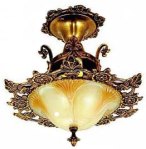
Of course, it is hard to picture either of those architectural masterpieces as a lighting fixture or a door knob, but as you browse our website you can clearly see the similarities in style. Elegant yet simple, classic yet modern, incorporating clean lines, simplistic designs; all are trademarks of Art Deco. All of our pieces are exact replicas of older pieces only when we are unable to obtain the originals.
As always, we offer discounts on most all of our items, ranging from limited to five year ones, and our customer service team is always available via email to help make sure your order is exactly what you want it to be, even if there are last minute changes to be made. All of our Art Deco light fixtures and door knobs come in a choice of finishes, making them the perfect addition to your Art Deco inspired home.
Home Restoration – Gaining Entry Into The World of Art Deco Style Hardware
Home Restoration – Gaining Entry Into The World of Art Deco Style Hardware
The Victorian era held many decorative objects that are of great value today. Door hardware is no exception and is still highly sought-after. The Art Deco style was very popular during this time and is still used for many home restoration projects today.
All through this era, door hardware was very ornamental. During Queen Victoria’s reign the hardware used on doors in America was actually quite simple in appearance usually constructed of metal, iron, bronze or in the case of some door knobs, glass. After the Civil War the design of door hardware changed radically, becoming more ornamental in style.
Door knobs at that time began to take on different forms with some even being shaped into animal heads and other figures. Many of these pieces are still highly coveted today. This popularity spread through America, but encompassed the types of hardware being manufactured in other countries at that time.
The turn of the century signified the decline of decorative hardware though a certain amount of ornamentation was still present on some pieces. The clean lines of Art Deco and Arts and Crafts hardware soon implemented simple forms and hand-finished surfaces. By the 1920s, the interest in decorative hardware had, for the most part, disappeared and Art Deco became even more popular.
Art Deco remains one of the most popular styles today and is still sought out when it comes to home renovations. Fortunately, this is type of hardware is not difficult to find when it comes time to replace items such as door knobs and locks and it is easy to install. There are many reproductions available that will dress up the look of any door and restore that authentic look while making it appear to be the natural hardware that was first placed on the door.
The Art Deco style hardware can also be used on any door of the house from the front door to the upstairs bedroom doors and is easy to coordinate. There is much to be said for restoring the natural look of a home and door hardware is a very important part of this process. The Art Deco style, while simple, provides an elegance specific to the era and adds great appeal to any room. A wide range of pieces are readily available so are easy to obtain which is one reason why this unique style will be around for many more years to come.
Visit LookInTheAttic & Company online at www.LookInTheAttic.com for a complete Art Deco home solution.







